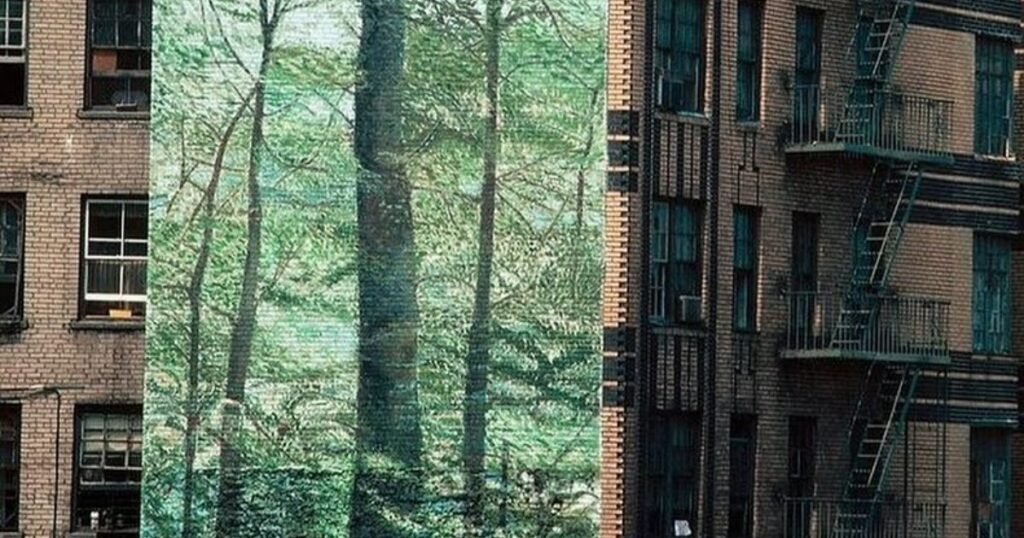
In 1983, photographer Thomas Hoepker captured a striking image in the heart of the South Bronx, New York. It wasn’t a scene of urban decay, as the area was often portrayed at the time, but a vibrant mural depicting a lush forest. This wasn’t a trick of the lens; the mural, created by artist Alan Sonfist in 1978, was a powerful testament to the transformative power of public art.
Sonfist’s masterpiece wasn’t just aesthetically pleasing; it served as a commentary on the stark contrast between the concrete jungle and the natural world. The detailed mural offered a glimpse of a bygone era, a time when the Bronx boasted a rich ecosystem. It was a hopeful vision, a reminder of the beauty that could potentially be restored.

While the building adorned with the forest mural still stands today, the artwork itself is sadly gone. Time and the elements likely played a role in its disappearance, but it also highlights the ephemeral nature of street art. These ever-changing canvases offer a unique snapshot of a time and place, but their impermanence adds another layer of intrigue.
Hoepker’s photograph serves as a valuable document of this lost artistic treasure. It captures not just the visual details of the mural, but also the juxtaposition between the artwork and its surroundings. The photo offers a glimpse into the South Bronx of the 1980s, a time of social and economic hardship, but also a time of artistic resilience.

The story of the South Bronx forest mural is a bittersweet one. It’s a reminder of the transformative power of art, but also the fragility of these creations. While the physical mural may be gone, Hoepker’s photograph ensures that its memory lives on, a testament to the enduring power of both art and photography.

Leave a Reply